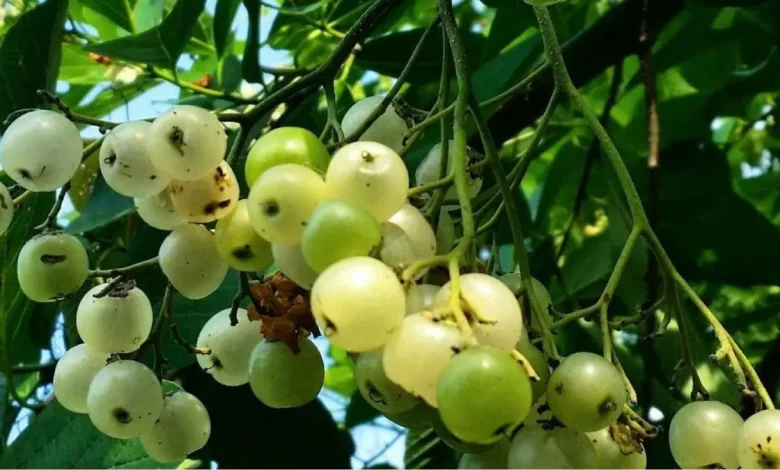Papaturro: A Comprehensive Guide to the Nutritious Central American Fruit

Papaturro is a tasty and healthy tropical fruit that is popularly enjoyed in Mexico and Central America. With its sweet, grape-like flavor and abundance of nutrients, papaturro has much to offer. This article will explore everything you need to know about papaturro fruit, from its uses and benefits to how to eat it.
Table of Contents
Introduction to Papaturro
Papaturro, scientifically known as Coccoloba caracasana, is a fruit native to Central America and Mexico. The name “papaturro” comes from the Nahuatl language and means “curled up grape.” True to its name, papaturro grows in bunches similar to grapes. When ripe, the fruit has a lightly sweet and tangy flavor reminiscent of white grapes.
Papaturro has long been enjoyed in its native growing region, where it is often eaten as a snack or used to make jams and desserts. However, this nutritious fruit deserves wider recognition for its many nutritional benefits. Read on to learn all about enjoying papaturro fruit.
Also Read: The Complete Guide to Didier’s Tulip: Scientifically as Tulipa Gesneriana
What is Papaturro?
Papaturro comes from a small to medium-sized tree that can grow up to 18 meters tall. The papaturro tree prefers tropical climates and thrives near riverbanks and sandy soils. Some key features of the tree include:
- Multiple woody stems growing from the base
- Alternate, oblong leaves approximately 8-14 inches long
- Small greenish flowers with a delicate fragrance
- Clusters of fruits resembling grapes
The grape-like fruits of the papaturro tree have a juicy, white to translucent pulp enclosing a large seed. When ripe, the sweet papaturro fruits are perfect for eating fresh or incorporating into various dishes.
Papaturro Fruit
The papaturro fruit itself is small, roughly the size of a large grape. Its skin transforms from green to light yellow or whitish when ripe. Underneath lies the translucent, jelly-like flesh that provides papaturro’s sweetness. Here’s an overview of papaturro fruit:
Also Read: Borojo: The Exotic Fruit with Untapped Health Potential
Appearance and Taste
- Whitish, translucent flesh similar to a white grape
- Sweet, slightly tangy taste providing a refreshing flavor
Nutritional Value
- Excellent source of vitamin C and dietary fiber
- Provides calcium, potassium, omega-3s, and other nutrients
- Low in calories and high in nutrients
Health Benefits
- Improves digestion with ample fiber
- Helps manage healthy blood pressure
- Benefits cardiovascular health by lowering cholesterol
- May aid in weight loss and weight management
- Boosts eyesight with antioxidants like vitamin C
With its stellar nutritional profile, papaturro offers many excellent health perks. Let’s look closer at how to eat this nutritious fruit.
Also Read: Marula Fruit Magic: Boost Your Health Naturally
Culinary Uses of Papaturro
Throughout Central America, papaturro is widely enjoyed for its sweet, grape-like taste. Here are some popular ways to eat it:
- Eaten raw as a snack, often by children
- Added to fruit salads, salsas, and relishes
- Made into jams, jellies, and desserts like ice cream
- Juiced and used in aguas frescas (fresh fruit drinks)
- Puréed into smoothies along with milk and honey
- Used in ceviches, sorbets, and popsicles for a refreshing touch
- Stewed as a dessert with cinnamon and sugar
With its versatility, papaturro can be enjoyed in both sweet and savory dishes. Experiment with using this tasty fruit in your own recipes.
Also Read: 10 Carao Fruit Facts That Will Blow Your Mind
Harvesting Papaturro Fruit
Papaturro is commonly grown in Guatemala, El Salvador, Honduras, Nicaragua, and other parts of Central America. It thrives in tropical climates with defined wet and dry seasons.
The papaturro harvest season lasts for around one month from late winter to early summer. During the short harvest window, fresh papaturro floods local markets and street stalls.
Since the ripe fruits only remain fresh for about a week after picking, most papaturros are consumed or processed immediately to make jams, juices, and pulps that can last longer. Taking advantage of the bountiful fresh harvest allows Central Americans to enjoy papaturro year-round.
Other Uses of the Papaturro Plant
In addition to its edible fruits, the papaturro tree has several other uses:
- Wood is valued as firewood and for making fence posts
- Leaves are used ornamentally for shade due to their large size
- Various parts of the tree are used in traditional herbal medicine
So the papaturro plant not only provides healthy fruit, but also serves various roles for local communities. Now let’s look at some frequently asked questions about papaturro.
Also Read: Monkey Fruit: A Nutritional Marvel with Number of Health Benefits
Papaturro FAQs
What does papaturro taste like?
Papaturro has a sweet, mildly tangy taste somewhat similar to white grapes. It provides a light, refreshing flavor.
Where does papaturro grow?
Papaturro is native to Mexico and Central American countries like Guatemala, El Salvador, and Honduras. It thrives in tropical climates.
What are the health benefits of papaturro?
Papaturro is an excellent source of vitamin C, fiber, potassium, and omega-3 fatty acids. It offers benefits for digestion, blood pressure, cardiovascular health, weight management, and eyesight.
How do you eat papaturro fruit?
Papaturro can be enjoyed raw, cooked, juiced, jammed, or added to smoothies and desserts. It is a versatile fruit that excels in both sweet and savory preparations.
In conclusion, papaturro is a nutritious, tasty fruit that offers numerous culinary and health benefits. With a flavor reminiscent of grapes and plenty of nutritional perks, papaturro deserves more widespread appreciation. Try using this Central American treat to give your recipes a delicious boost of vitamins, fiber, and antioxidants.




